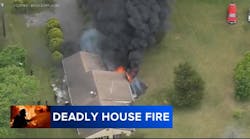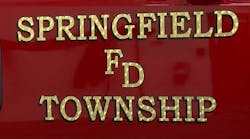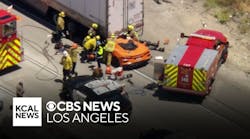Whether you’re in a volunteer or career department, whether you’re a chief or a company officer and whether you have a training budget, I want you to ask yourself this question: Are you really training? I don’t mean, do you simply have a training schedule that’s posted for the company officers to follow or that you supervise your companies during “drill period”? But are you really training?
When it comes to training for fire companies, two elements of training in particular produce a much better product than does simply sitting down and talking about tools or tactics.
Hands-on
The first and most important element of a good fire company training program is realism. Realism means that, along with all of the other activities that training involves, there must be a hands-on element, so the skills actually can be performed and measured.
Many fire companies view a forcible-entry video, followed by a walk around the firehouse with a set of irons to explain and demonstrate the striking and prying elements of the skill. Many things can be shown, such as what inward- and outward-opening doors are and what part of the tool is used on each. However, none of those activities gives even a small fraction of the clarity that a firefighter gets when actually forcing a door with a partner.
The modern forcible-entry simulators are fantastic. If your department has the funds (the simulators are expensive), one should be made available. If your department can’t afford a simulator, you can find dozens of plans online that show how a simulator can be constructed in house to provide excellent hands-on training. This same principle can be used for roof-cutting, search and many other basic skills.
The lessons learned and experience gained by actually handling a set of irons is so much greater than what’s learned and gained by watching a video.
A training standard
How else can you put yourself in a position to improve your department’s current training regimen? Establishing and documenting a training standard within the department yields positive results. A training standard is the number of hours of training that each firefighter is expected to receive and the menu of training topics that are included in the training. The number of hours that are required will vary from department to department and might even be a requirement of your state. Whatever the required number of hours is for, let’s say, the year, the department must structure the training program so that a firefighter has the opportunity to receive those hours of instruction.
Obviously, every training event—whether it’s a post-fire review in quarters or a hands-on training session using a power saw for ventilation—must be documented properly, noting not only the amount of training time but the topic as well.
Furthermore, the composition of the menu of training topics isn’t a random selection but, rather, a well-thought-out and well-researched collection of skills, abilities, procedures, tools, and regulations that apply to the department’s work history and to current conditions. For example, in a fire jurisdiction that is composed of 90 percent private dwellings and 10 percent commercial buildings, the training emphasis should be on fires and emergencies that routinely occur in those buildings. Reviewing several previous years’ alarms will give you a good picture of the workload, which in turn will give you a direction for your training program.
Training program improvement
By using the two suggestions that are discussed above, you can bump up the number of hours, the topics that are included and the effectiveness of your department’s training programs.






